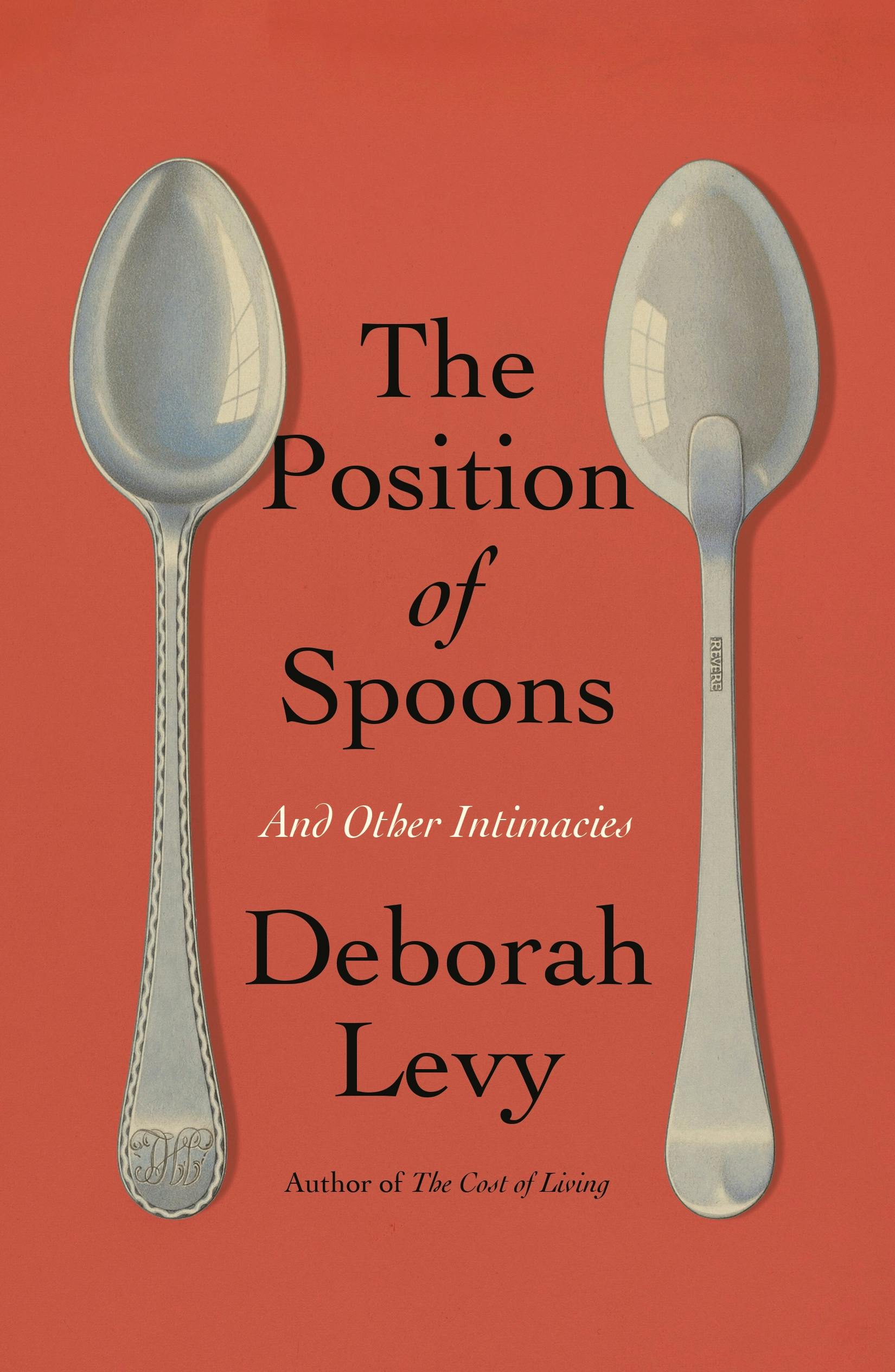The Position of Spoons: And Other Intimacies
- By Deborah Levy
- Farrar, Straus and Giroux
- 176 pp.
- Reviewed by Patricia Schultheis
- October 11, 2024
Though spare, these trenchant musings are rendered expansively.

Deborah Levy is to writing what Nancy Pelosi is to governing. Like the Speaker of the House emerita, three-time Booker Prize nominee Levy is supremely intelligent, accomplished, dedicated, and, at this stage in her remarkable career, utterly in control of her craft. Reading her new collection of essays, The Position of Spoons, one senses Levy has also attained enviable levels of self-confidence and self-possession. The woman knows what she’s doing and is aware that she does it very well. She takes risks and pulls them off.
Many of this collection’s essays focus on women who refuse to suppress their talents for the sake of prescribed societal roles. With aplomb and style, Levy writes about the inner and outer struggles of the authors Colette, Violette Leduc, and Simone de Beauvoir, as well as those of the photographers Francesca Woodman and Lee Miller, and the painter Paula Rego. But Levy’s collection is no feminist rage against male-dominated systems. Rather, she writes from the perspective of one who’s been there, done that. Levy understands that the obstacles her subjects overcame formed the foundation of their ultimate triumphs.
About the photographer Woodman’s spectral photo of herself, Levy writes, “She knows that when we look at this image we will want to find her, but the her we find is the art.” In other words, to know these women, one must read what they wrote, study the images they created. To find the artist, search her art.
The collection shares its title with a single brief essay Levy includes about a mysterious older neighbor named Mr. John, who had the flat below hers when she was 26. During one brief encounter in the tiny hallway they share, Mr. John tells Levy, “It was important to boil an egg four, and not five minutes, and the spoon must be laid on the plate pointing towards the egg and not away from it.” Such a strange admonition. Such revealing obsessiveness. Such a cryptic detail.
At the time, Levy has a boyfriend named Matteo who regularly flies up from Rome to see her. Somehow, Mr. John always contrives to be in the hall when Matteo arrives, and the two engage in lively conversations about artichokes, liturgical music, and traffic, while Levy “lurked on the stairway feeling like a gooseberry.” The one time Mr. John invites Levy into his apartment for tea, she discovers he’s purloined a loving postcard from Matteo to her. But when she calls Matteo and tells him, he dismisses her concern and instead tells Levy how proud he feels whenever Mr. John praises his choice of roadways from Heathrow to her apartment. Especially at rush hour.
A writer less trusting of her readers’ collaboration in the narrative process might have gone on to explain how crushed she felt by Matteo’s hunger for Mr. John’s approval, as well as by his lack of concern for her — there’s something voyeuristic about an older man stealing someone else’s mail. But Levy ends the essay abruptly, right after Matteo makes his roadway remark. What else is there to say?
Like the writer J.G. Ballard, whom she admires, Levy is a modernist. By eschewing intricate grammatical structures, brocaded vocabulary, and lengthy explanatory passages about hurt feelings, she transforms her readers from passive recipients to active participants in her story. Italian boyfriend Matteo isn’t concerned about Levy living above creepy Mr. John? Instead, he rather enjoys the latter’s praise of his navigational prowess? Really? One can almost hear Levy’s romance going splat, like an egg dropped on a marble floor.
With modernism’s flat tonality and details as acute as pinpricks of light through a black curtain, Levy captures contemporary life’s overwhelmingness, its soul-wrenching contradictions and individual isolation. In “A Mouthful of Grey,” she writes about a rainy day in London’s Russell Square Gardens:
“A civic garden square gentles the pace of the city that surrounds it, holding a thought before it scrambles. Its punctuation is a pause in the life of the city. A place where the beginnings of a latent nervous breakdown can express itself and God can be glimpsed inside the body of a London pigeon.”
Seventy-eight syllables. Two complete sentences. One fragment. A single, resounding wow.
However, this is no personal narrative about a writer’s crackup; rather, it is an invitation. Levy speaks directly to her readers, telling us about a nearby brasserie once named for Virginia Woolf where one may enjoy a hamburger with fries and coleslaw. A mouthful of ground beef eaten in a place once named for a brilliant woman who filled her pockets with stones and sank beneath the surface of a river. By the essay’s end, readers have swallowed their own mouthful of grey.
The 34 essays in The Position of Spoons are short, and, given their minimalist style, eminently readable, so it would be easy to devour rather than savor them. Levy once told an interviewer she’s had to learn to think slowly, to observe, to process, and to notice unlikely connections. Readers would be advised to approach this collection in the same spirit. To fully appreciate Levy’s inventiveness, we readers should immerse ourselves in her artistry, should trust ourselves to be the silver spoons that stir our own minds.
Patricia Schultheis is the author of 40 published short stories, including the award-winning collection St. Bart’s Way. She is also the author of Baltimore’s Lexington Market, published in 2007, and A Balanced Life, published in 2018. She is the recipient of numerous awards and honors and is a member of the National Book Critics Circle. She lives in Baltimore.

